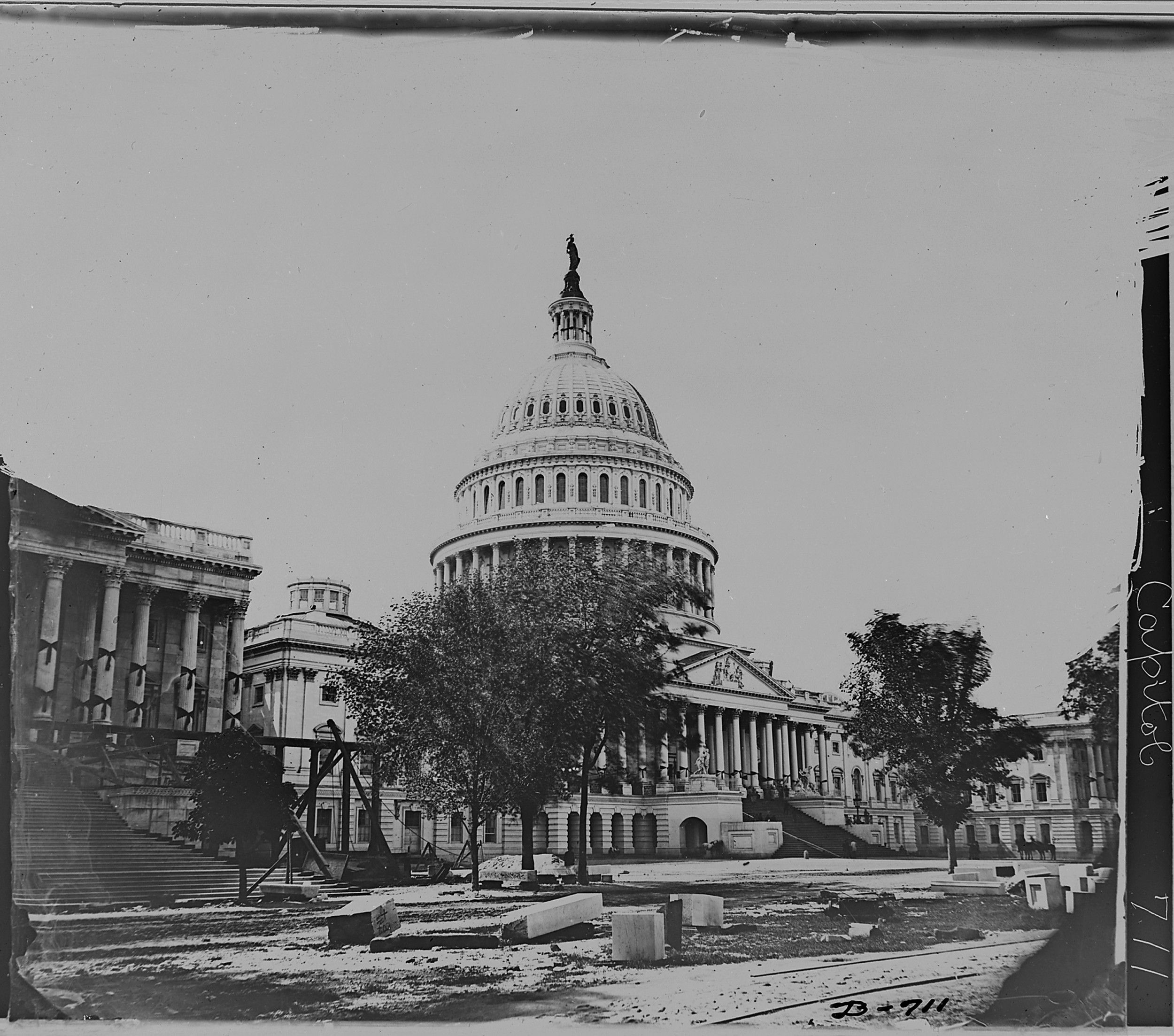Monumentos Nacionales Expresan Valores Nacionales
Seeing the Big Picture
All documents and text associated with this activity are printed below, followed by a worksheet for student responses.Introduction
Los monumentos nacionales y los edificios pueden representar a personas, ideas e instituciones. Usted verá las imágenes de monumentos y edificios en esta actividad. Haga clic en una imagen para verlo más de cerca. Luego haga clic en el cuadrado con el título correcto para hacer una unión . Para cada imagen que usted ve, anote la persona, idea o institución que usted piensa que representa en una tabla T.Name:
Class:
Class:
Worksheet
Monumentos Nacionales Expresan Valores Nacionales
Seeing the Big Picture
Examine the documents and text included in this activity. Consider how each document or piece of text relates to each other and create matched pairs. Write the text or document number next to its match below. Write your conclusion response in the space provided.1
2
3
4
5
6
1
Activity Element

2
Activity Element

3
Activity Element
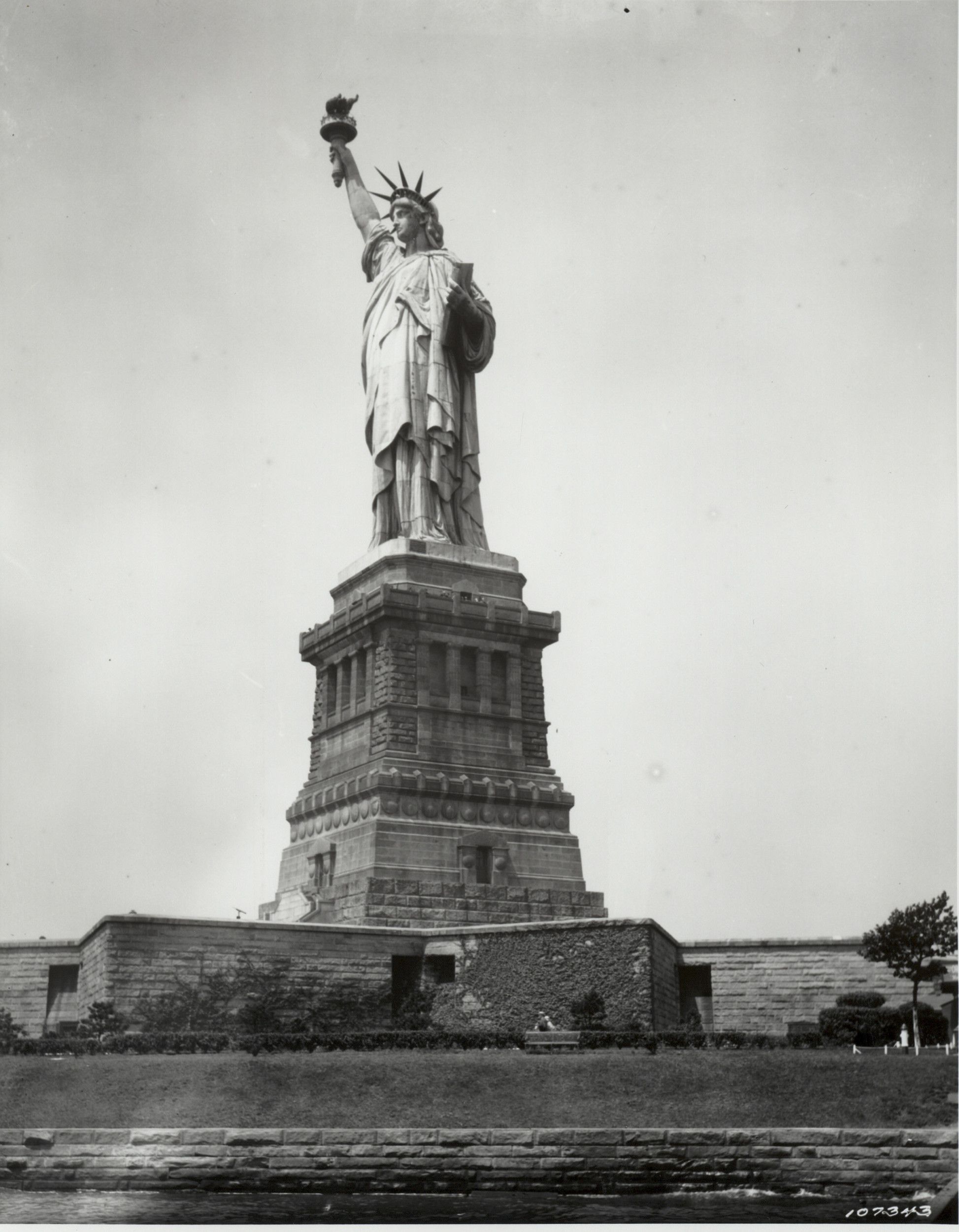
4
Activity Element
El Monumento Washington
5
Activity Element

6
Activity Element

7
Activity Element
El Monumento Lincoln
8
Activity Element
La Estatua de Libertad
9
Activity Element
El Capitolio de los Estados Unidos
10
Activity Element
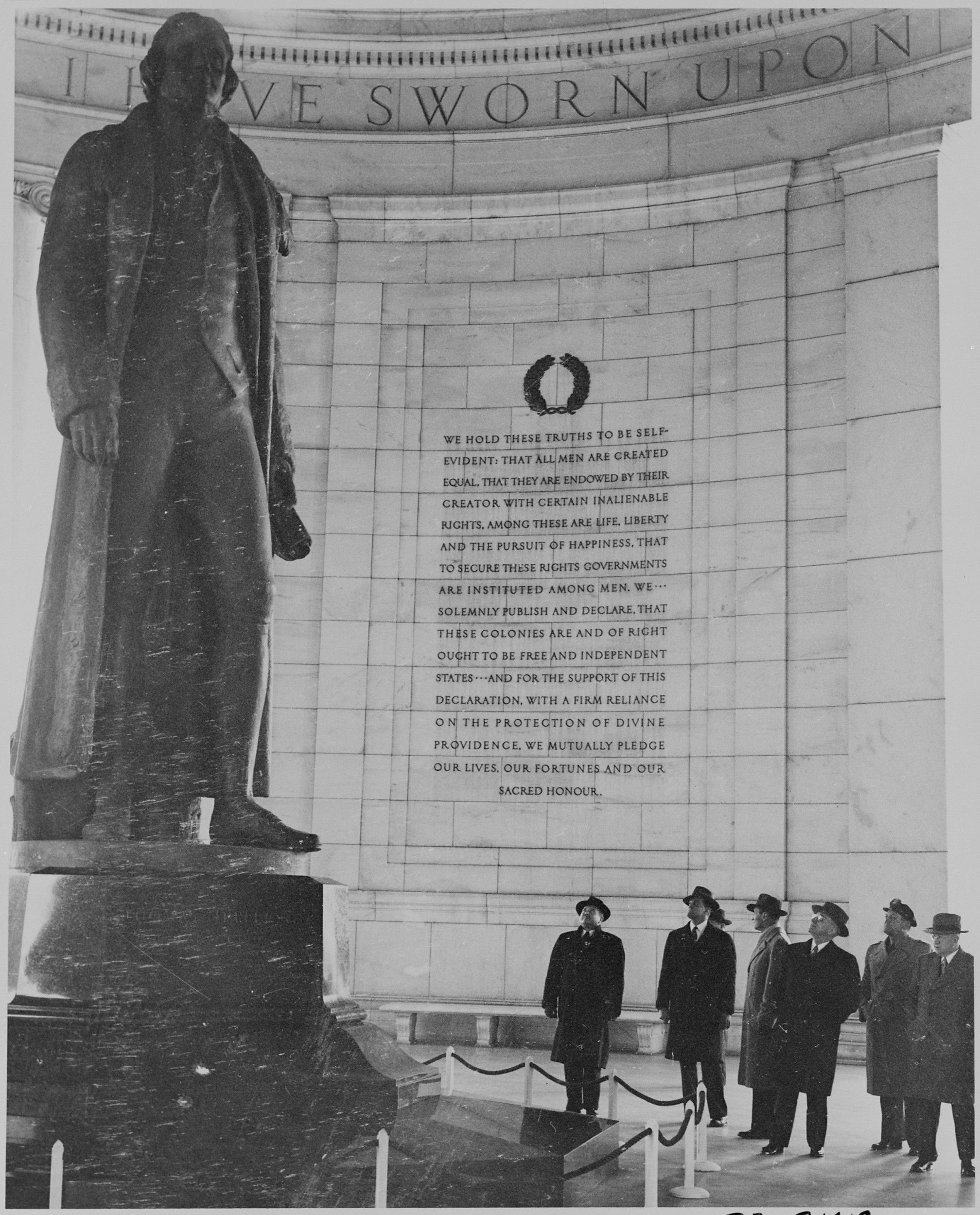
11
Activity Element
El Monumento de Jefferson
12
Activity Element
La Corte Suprema
Culminating Document
Design for the Verso of the Great Seal of the United States
1782
Just a few hours after the Declaration of Independence was adopted by the Continental Congress on July 4, 1776, the first committee to design a seal for the United States was appointed, and its design began.
The committee members—Benjamin Franklin, Thomas Jefferson, and John Adams—prepared a very complicated design that was promptly tabled by Congress. However, one prominent feature of their design appeared in the design that was originally adopted—the motto E Pluribus Unum, "Out of Many, One."
In 1780, a second committee—James Lovell of Massachusetts and John Morin Scott and William Churchill Houston of Virginia—developed a second design, but it was also tabled by Congress. Like the first design, the second had elements that were later incorporated into the final seal, including the olive branch, the constellation of 13 stars, and the shield with red and white stripes on a blue field.
A third committee was appointed in May of 1782. This committee's design employed the eagle for the first time, in the crest.
Early in 1782, Congress referred the three designs to Secretary of the Continental Congress Charles Thomson. Thomson combined elements of all three previous attempts to make a fourth design. He made the eagle the focal point with its wings pointed down as if in flight. The shield on the eagle’s breast was blue with 13 red and white chevrons pointing up. His design was revised by William Barton, a Philadelphia student of heraldry, to create the current design.
Thomson submitted a written description of his final version to the Continental Congress that described the design and explained its symbolism. The Continental Congress approved and officially adopted this design on June 20, 1782.
The Great Seal of the United States is the symbol of our sovereignty as a nation. Its obverse is used on official documents to authenticate the signature of the President; and it appears on proclamations, warrants, treaties, and commissions of high officials of the government. The Great Seal's design, used as our national coat of arms, is also used officially as decoration on military uniform buttons, on plaques above the entrances to U.S. embassies an consulates, and in other places. Both the obverse and the less familiar reverse, which is never used as a seal, are imprinted on the one-dollar bill.
This document was featured in “Teaching with Documents : OurDocuments.gov” in the November/December 2002 National Council for the Social Studies (NCSS) publication Social Education.
The committee members—Benjamin Franklin, Thomas Jefferson, and John Adams—prepared a very complicated design that was promptly tabled by Congress. However, one prominent feature of their design appeared in the design that was originally adopted—the motto E Pluribus Unum, "Out of Many, One."
In 1780, a second committee—James Lovell of Massachusetts and John Morin Scott and William Churchill Houston of Virginia—developed a second design, but it was also tabled by Congress. Like the first design, the second had elements that were later incorporated into the final seal, including the olive branch, the constellation of 13 stars, and the shield with red and white stripes on a blue field.
A third committee was appointed in May of 1782. This committee's design employed the eagle for the first time, in the crest.
Early in 1782, Congress referred the three designs to Secretary of the Continental Congress Charles Thomson. Thomson combined elements of all three previous attempts to make a fourth design. He made the eagle the focal point with its wings pointed down as if in flight. The shield on the eagle’s breast was blue with 13 red and white chevrons pointing up. His design was revised by William Barton, a Philadelphia student of heraldry, to create the current design.
Thomson submitted a written description of his final version to the Continental Congress that described the design and explained its symbolism. The Continental Congress approved and officially adopted this design on June 20, 1782.
The Great Seal of the United States is the symbol of our sovereignty as a nation. Its obverse is used on official documents to authenticate the signature of the President; and it appears on proclamations, warrants, treaties, and commissions of high officials of the government. The Great Seal's design, used as our national coat of arms, is also used officially as decoration on military uniform buttons, on plaques above the entrances to U.S. embassies an consulates, and in other places. Both the obverse and the less familiar reverse, which is never used as a seal, are imprinted on the one-dollar bill.
This document was featured in “Teaching with Documents : OurDocuments.gov” in the November/December 2002 National Council for the Social Studies (NCSS) publication Social Education.
This primary source comes from the Records of the Continental and Confederation Congresses and the Constitutional Convention.
National Archives Identifier: 595257
Full Citation: Design for the Verso of the Great Seal of the United States; 1782; Reports on Administrative Affairs of the Congress; Papers of the Continental Congress, 1774 - 1789; Records of the Continental and Confederation Congresses and the Constitutional Convention, ; National Archives Building, Washington, DC. [Online Version, https://www.docsteach.org/documents/document/design-verso-great-seal, April 23, 2024]Design for the Verso of the Great Seal of the United States
Page 1
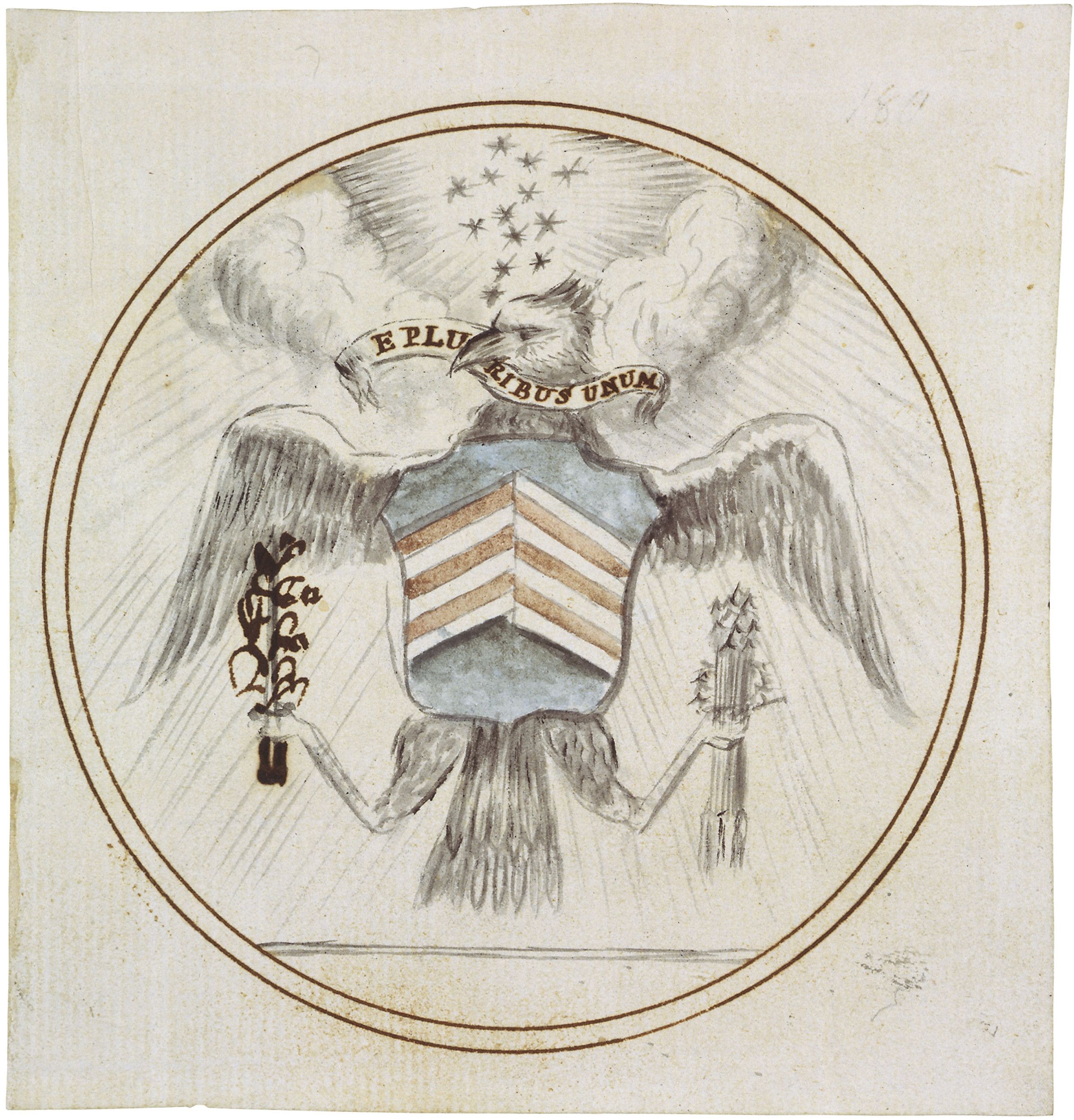
Conclusion
Monumentos Nacionales Expresan Valores Nacionales
Seeing the Big Picture
Ahora que usted ha visto los símbolos que representan los ideales estadounidenses. Asegúrese de que ha completado su tabla T para que puedas compartir tus ideas con la clase. ¿Cómo el diseño de un edificio o monumento representa el sujeto? ¿Por qué crees que la honramos ciertas personas, las ideas y las instituciones?Your Response
Document
The Abraham Lincoln Statue Installation in the Lincoln Memorial, Washington, D.C.
1920
This photograph shows workers assembling President Abraham Lincoln’s statue at the Lincoln Memorial in Washington, DC, in 1920. Originally designed to be 10 feet tall, the likeness was 19 feet high when completed, so that the cavernous chamber would not dwarf the statue.
Construction began on the memorial to Lincoln in 1915, fifty years after his assassination. American sculptor Daniel Chester French designed the statue to honor the 16th President. French had gained a national reputation with his earlier portrayal of "The Minute Man," a statue to honor those colonials who died at Lexington and Concord in 1775.
In describing his tribute to Lincoln, French said: "The memorial tells you just what manner of man you are come to pay homage to; his simplicity, his grandeur, and his power." President Warren G. Harding dedicated the building and the sculpture on May 30, 1922.
The Lincoln Memorial has been the backdrop for many important public protests and events since its completion. It was on the memorial's steps that singer Marian Anderson gave her Easter Sunday concert in 1939 after being turned away from Constitution Hall by the Daughters of the American Revolution, and where Dr. Martin Luther King, Jr., delivered his "I Have a Dream" speech in August 1963.
Construction began on the memorial to Lincoln in 1915, fifty years after his assassination. American sculptor Daniel Chester French designed the statue to honor the 16th President. French had gained a national reputation with his earlier portrayal of "The Minute Man," a statue to honor those colonials who died at Lexington and Concord in 1775.
In describing his tribute to Lincoln, French said: "The memorial tells you just what manner of man you are come to pay homage to; his simplicity, his grandeur, and his power." President Warren G. Harding dedicated the building and the sculpture on May 30, 1922.
The Lincoln Memorial has been the backdrop for many important public protests and events since its completion. It was on the memorial's steps that singer Marian Anderson gave her Easter Sunday concert in 1939 after being turned away from Constitution Hall by the Daughters of the American Revolution, and where Dr. Martin Luther King, Jr., delivered his "I Have a Dream" speech in August 1963.
This primary source comes from the Records of the Office of Public Buildings and Public Parks of the National Capital.
National Archives Identifier: 596194
Full Citation: Photograph 42-M-J-1; The Abraham Lincoln Statue Installation in the Lincoln Memorial, Washington, D.C.; 1920; Miscellaneous Oversized, 1875 - 1932; Records of the Office of Public Buildings and Public Parks of the National Capital, ; National Archives at College Park, College Park, MD. [Online Version, https://www.docsteach.org/documents/document/lincoln-memorial-installation, April 23, 2024]The Abraham Lincoln Statue Installation in the Lincoln Memorial, Washington, D.C.
Page 1

Document
Photograph of President Truman with Secretary of the Interior Harold Ickes and others, standing inside the Jefferson Memorial looking up at a statue of Thomas Jefferson
1/14/1946
This primary source comes from the Collection HH-AV: Hoover Presidential Library Audiovisual Collection.
National Archives Identifier: 199303
Full Citation: Photograph of President Truman with Secretary of the Interior Harold Ickes and others, standing inside the Jefferson Memorial looking up at a statue of Thomas Jefferson; 1/14/1946; Collection HH-AV: Hoover Presidential Library Audiovisual Collection, . [Online Version, https://www.docsteach.org/documents/document/photograph-of-president-truman-with-secretary-of-the-interior-harold-ickes-and-others-standing-inside-the-jefferson-memorial-looking-up-at-a-statue-of-thomas-jefferson, April 23, 2024]Photograph of President Truman with Secretary of the Interior Harold Ickes and others, standing inside the Jefferson Memorial looking up at a statue of Thomas Jefferson
Page 1
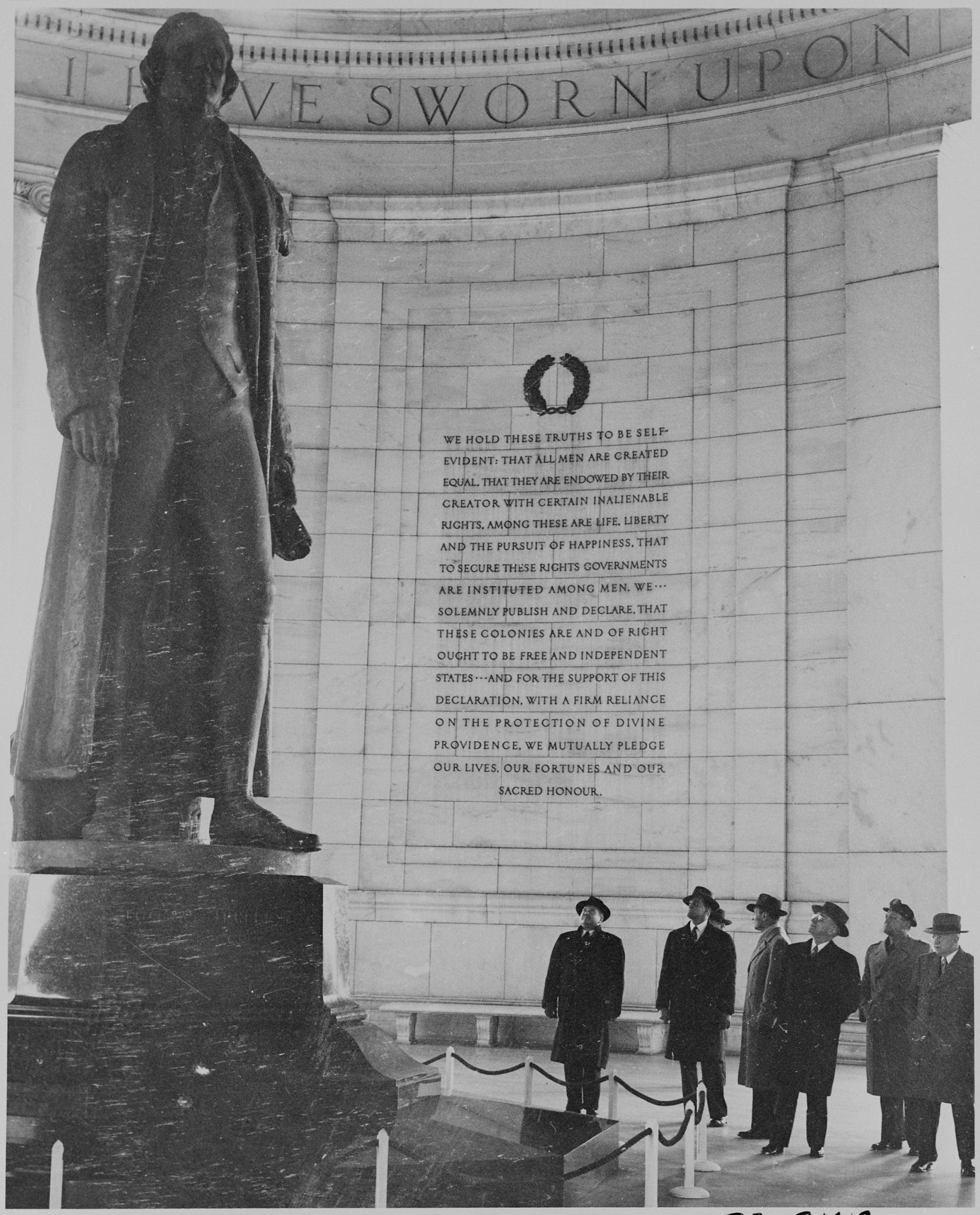
Document
Photograph of Crowd at the Washington Monument during the March on Washington
8/28/1963
A rally at the Washington Monument on August 28, 1963, began the “March on Washington for Jobs and Freedom.” The march proceeded to the Lincoln Memorial, where Dr. Martin Luther King delivered his famous “I Have a Dream” speech. March leaders then met with President John F. Kennedy. A record 250,000 civil rights demonstrators participated peacefully in this Washington, D.C., event.
This primary source comes from the Records of the U.S. Information Agency.
National Archives Identifier: 595342
Full Citation: Photograph of Crowd at the Washington Monument during the March on Washington; 8/28/1963; Records of the U.S. Information Agency, . [Online Version, https://www.docsteach.org/documents/document/photograph-of-crowd-at-the-washington-monument-during-the-march-on-washington, April 23, 2024]Photograph of Crowd at the Washington Monument during the March on Washington
Page 1
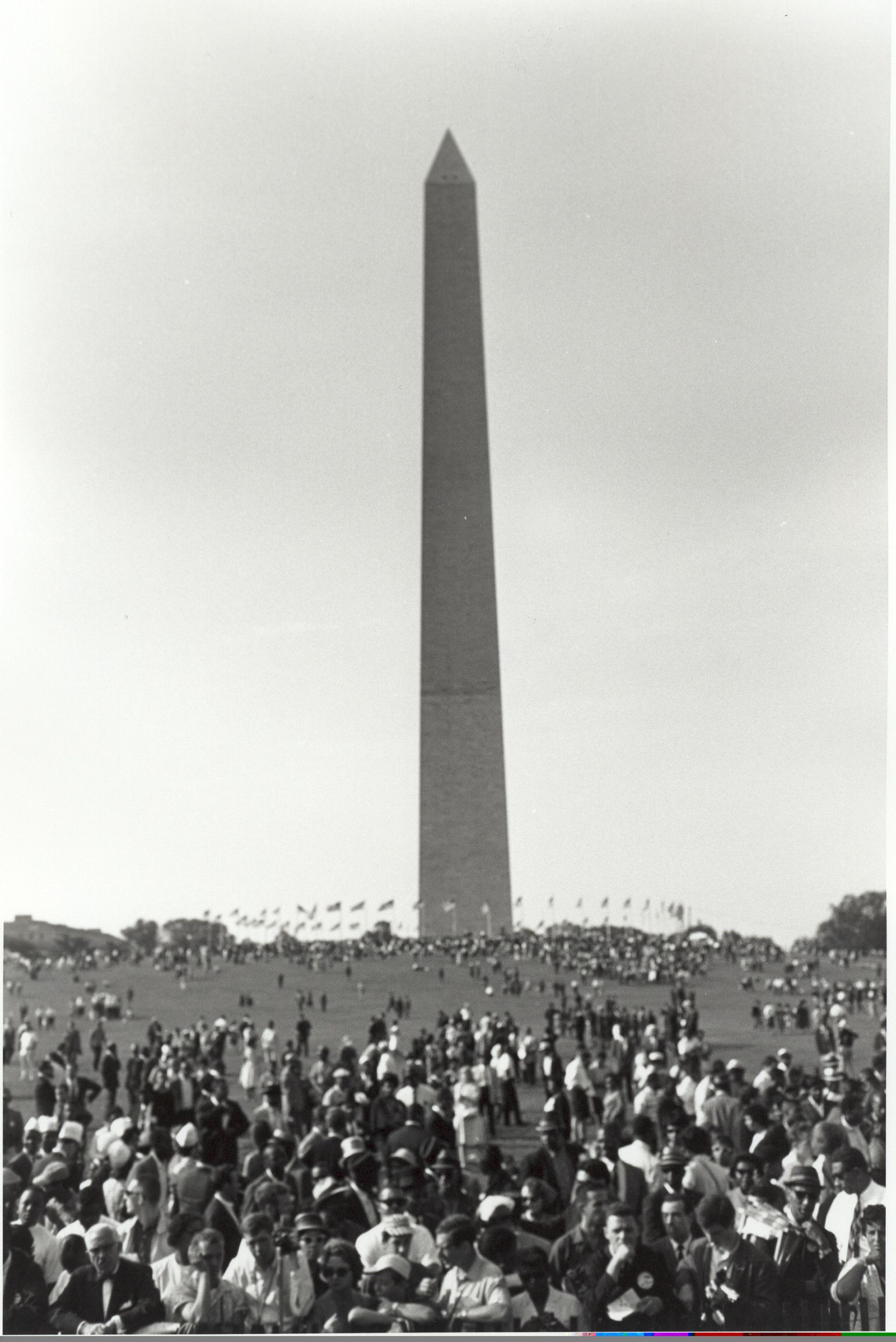
Document
Photograph of the Statue of Liberty
ca. 1930
This undated photograph shows the Statue of Liberty in the New York Harbor. The landmark was sculpted by Frédéric Auguste Bartholdi and given to the people of the United States by the people of France to commemorate the centennial of the American Declaration of Independence. The statue measures a little over 151 feet high, while the granite pedestal is 154 feet high. Dedicated in 1886 as Liberty Enlightening the World, it remains a popular American symbol.
This primary source comes from the Records of the Office of the Chief Signal Officer.
National Archives Identifier: 594414
Full Citation: Photograph of the Statue of Liberty; ca. 1930 ; Records of the Office of the Chief Signal Officer, . [Online Version, https://www.docsteach.org/documents/document/photograph-of-the-statue-of-liberty, April 23, 2024]Photograph of the Statue of Liberty
Page 1
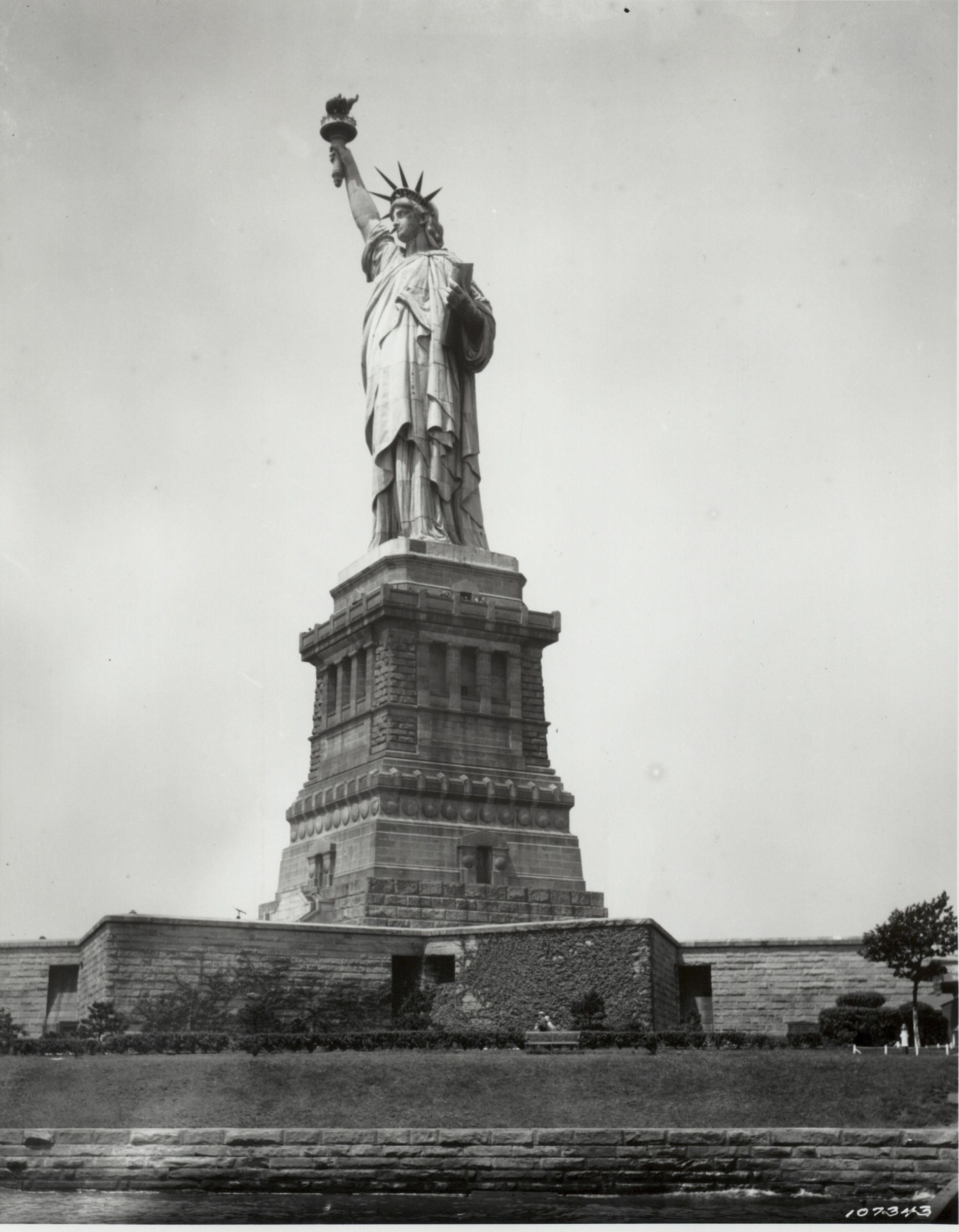
Document
Supreme Court Building
The neoclassical U.S. Supreme Court Building in Washington, D.C., was designed by architects Cass Gilbert, Jr., and John R. Rockart. Although a coequal branch of the Government, the Supreme Court was not provided with a home of its own until 1935. Chief Justice and former President William Howard Taft persuaded Congress to authorize the building.
This primary source comes from the Records of the National Archives and Records Administration.
National Archives Identifier: 594954
Full Citation: Photograph 64-M-54; Supreme Court Building; Photographic Records Made By The National Archives, 1860 - 1960; Records of the National Archives and Records Administration, ; National Archives at College Park, College Park, MD. [Online Version, https://www.docsteach.org/documents/document/supreme-court-building, April 23, 2024]Supreme Court Building
Page 1
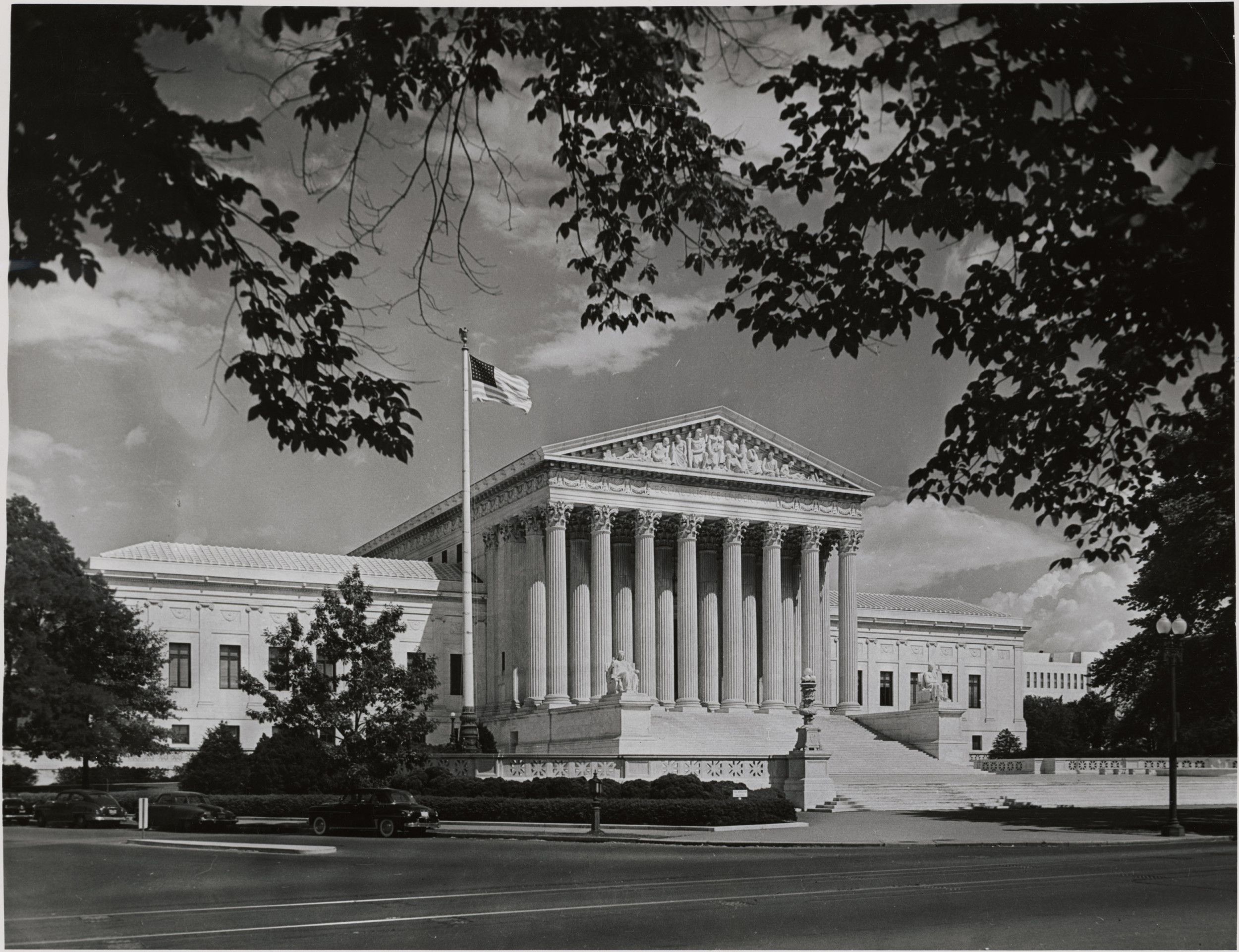
Document
Capitol of the United States, Washington, D.C
ca. 1860 - 1865
This primary source comes from the Records of the Office of the Chief Signal Officer.
National Archives Identifier: 525116
Full Citation: Capitol of the United States, Washington, D.C; ca. 1860 - 1865; Mathew Brady Photographs of Civil War-Era Personalities and Scenes, 1921 - 1940; Records of the Office of the Chief Signal Officer, . [Online Version, https://www.docsteach.org/documents/document/us-capitol, April 23, 2024]Capitol of the United States, Washington, D.C
Page 1
